British Recruitment Posters
The first official recognition of the importance of the propaganda poster came during the recruiting campaign which began towards the close of 1914. The Parliamentary Recruiting Committee gave commissions for more than a hundred posters, of which two and a half million copies were distributed throughout the British Isles. Posters continued throughout the war to be an important medium of mass communication in a country that did not have public radio or television. The only alternative form of mass communication, the newspapers, suffered from limitations such as the inability to print in colour. Posters were able to provide the colour, power and size need to convey simple messages to a mass audience in a most powerful way.
Much of the style, imagery and graphics used in British recruitment posters was derived from the advertising industry and used an approach that was direct. Often artists sought to give their creations extra appeal through employing visual puns, turning them into an aspect of entertainment. The themes employed to encourage recruits included patriotism, nationalism, xenophobia, comradeship, revenge, a desire to protect women and loved ones, fear of being 'left behind' and of course the chance to avoid the charge of cowardice.
The text and images on this page are the copyright of the McLean Museum and Art Gallery. For enquiries about this collection please contact us at wattinstitution@inverclyde.gov.uk.
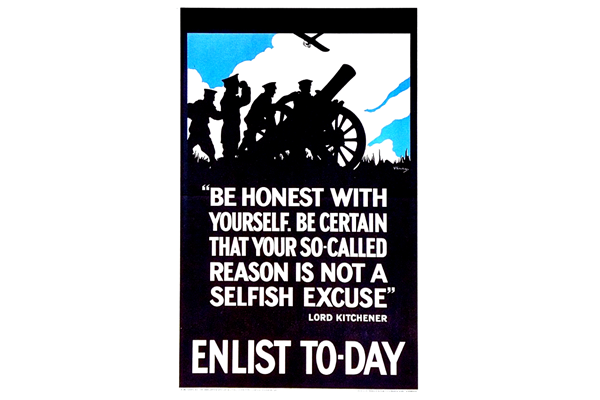
Be Honest with Yourself
First World War recruitment poster 'Be Honest with Yourself...Enlist Today', published by the Parliamentary Recruiting Committee, London in 1915 - 1996.100.8 ©McLean Museum and Art Gallery, Greenock.

Will You Make A Fourth?
First World War recruitment poster 'Will You Make A Fourth?', published by the Department of Recruiting for Ireland in 1915. - 1996.100.13 ©McLean Museum and Art Gallery, Greenock.
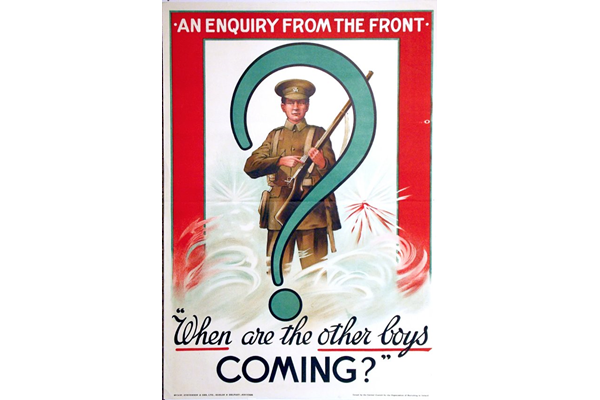
An Enquiry From the Front
First World War recruitment poster 'An Enquiry From the Front', published by the Central Council for the Organization of Recruiting in Ireland in 1915. - 1996.100.164 ©McLean Museum and Art Gallery, Greenock.
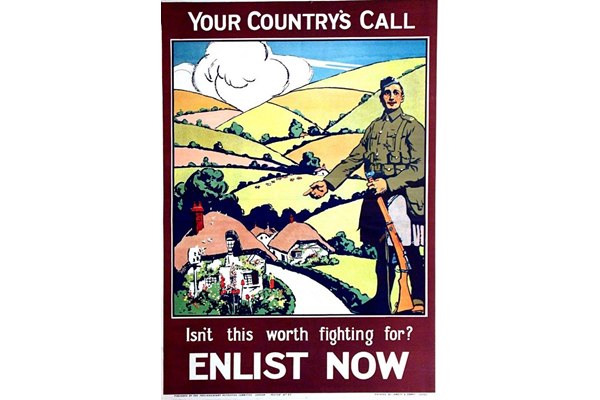
Your Country's Call
First World War recruitment poster 'Your Country's Call', published by the Parliamentary Recruiting Committee in 1915. - 1996.100.172 - ©McLean Museum and Art Gallery, Greenock.
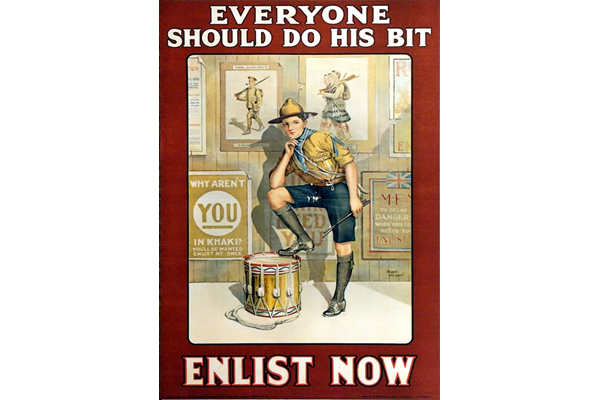
Everyone Should Do His Bit
First World War recruitment poster 'Everyone Should Do His Bit', published by the Parliamentary Recruiting Committee in 1915 - 1996.100.174 ©McLean Museum and Art Gallery, Greenock.

Who’s Absent?
First World War recruitment poster 'Who’s Absent?', published by the Parliamentary Recruiting Committee in 1915. - 1996.100.19 ©McLean Museum and Art Gallery, Greenock.
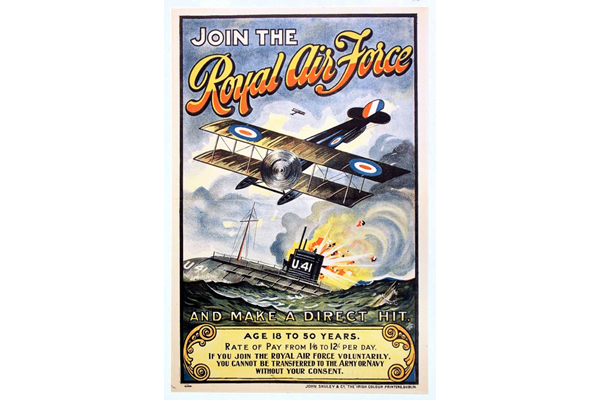
Join the Royal Air Force
First World War recruitment poster 'Join the Royal Air Force', published by the Royal Air Force in 1918. - 1996.100.18 ©McLean Museum and Art Gallery, Greenock.
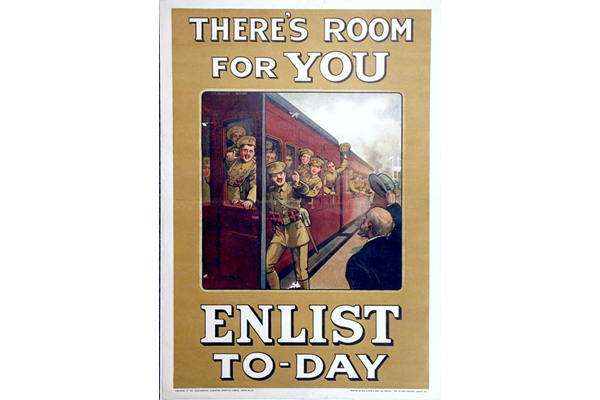
There’s Room for You
First World War recruitment poster 'There’s Room for You', published by the Parliamentary Recruiting Committee in 1915. - 1996.100.175 ©McLean Museum and Art Gallery, Greenock.
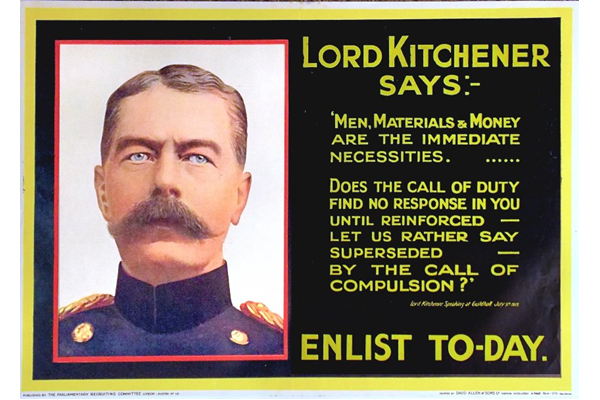
Men, materials & money
First World War recruitment poster 'Men, materials & money', published by the Parliamentary Recruiting Committee in 1915. - 1996.100.179 ©McLean Museum and Art Gallery, Greenock.
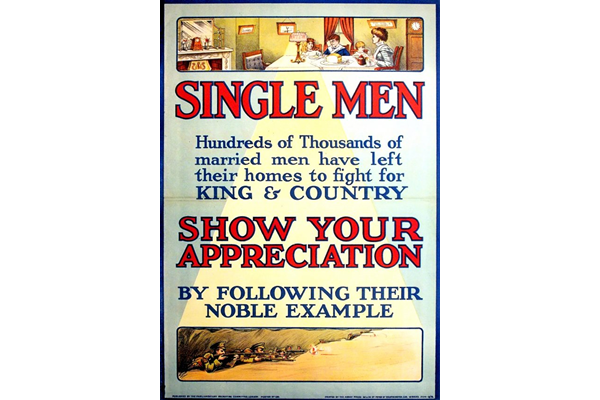
Single Men
First World War recruitment poster 'Single Men', published by the Parliamentary Recruiting Committee in 1915. - 1996.100.180 ©McLean Museum and Art Gallery, Greenock.

Follow Me! Your Country Needs You
First World War recruitment poster 'Follow Me! Your Country Needs You', published by the Parliamentary Recruiting Committee in 1914. - 1996.100.185 ©McLean Museum and Art Gallery, Greenock.
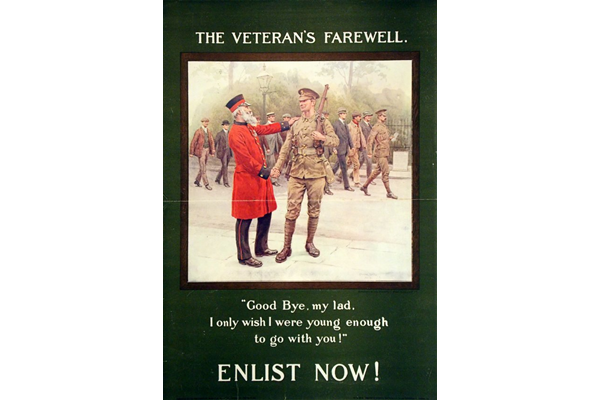
The Veteran's Farewell
First World War recruitment poster 'The Veteran's Farewell', published by the Parliamentary Recruiting Committee in 1914. - 1966.100.192 ©McLean Museum and Art Gallery, Greenock.

There is still a Place in the Line for You
First World War recruitment poster 'There is still a Place in the Line for You', published by the Parliamentary Recruiting Committee in 1915. - 1996.100.193 ©McLean Museum and Art Gallery, Greenock.
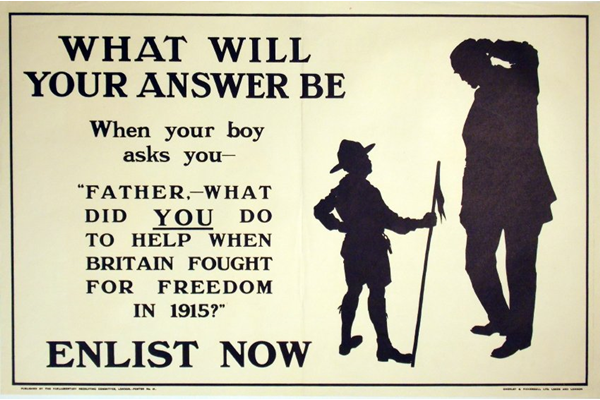
What will your answer be?
First World War recruitment poster 'What will your answer be?', published by the Parliamentary Recruiting Committee in 1915. - 1996.100.197 ©McLean Museum and Art Gallery, Greenock.
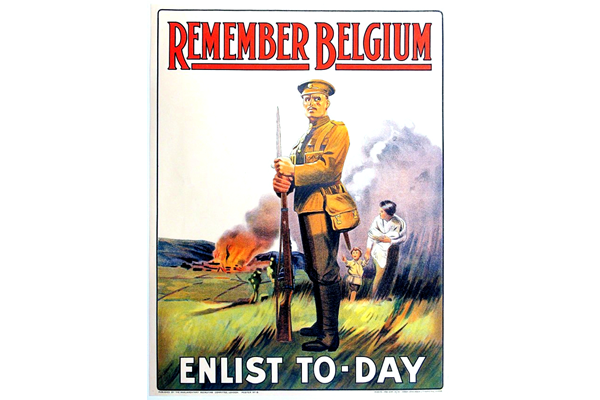
Remember Belgium!
First World War recruitment poster 'Remember Belgium' issued by the Parliamentary Recruiting Committee in 1915. - 1996.100.487 ©McLean Museum and Art Gallery, Greenock.

Are You in This?
First World War recruitment poster 'Are You in This?', published by the Parliamentary Recruiting Committee in 1915. - 1996.100.41 ©McLean Museum and Art Gallery, Greenock.
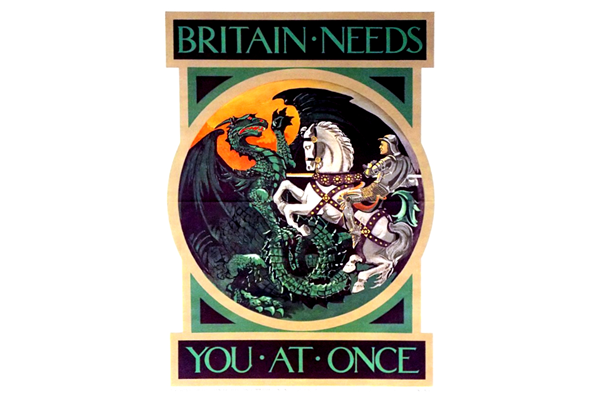
Britain Needs You at Once
First World recruitment poster 'Britain Needs You at Once', published by the Parliamentary Recruiting Committee in 1915 - 1996.100.15
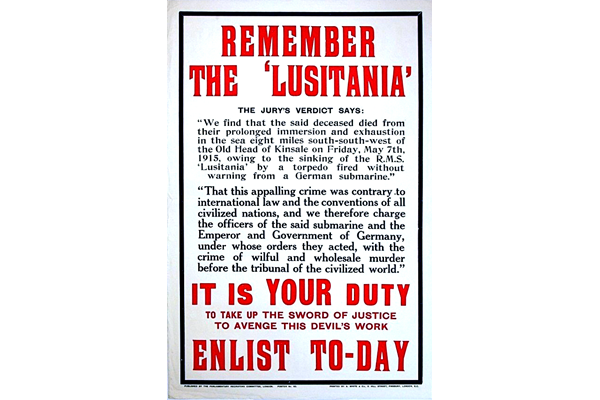
Remember the Lusitania!
First World War recruitment poster 'Remember the Lusitania!', published by the Parliamentary Recruiting Committee in 1915 - 1996.100.36 ©McLean Museum and Art Gallery, Greenock.

A Happy New Year
First World War recruitment poster 'A Happy New Year to our Gallant Soldiers', published by the Parliamentary Recruiting Committee in 1915. - 1996.100.176 ©McLean Museum and Art Gallery, Greenock.
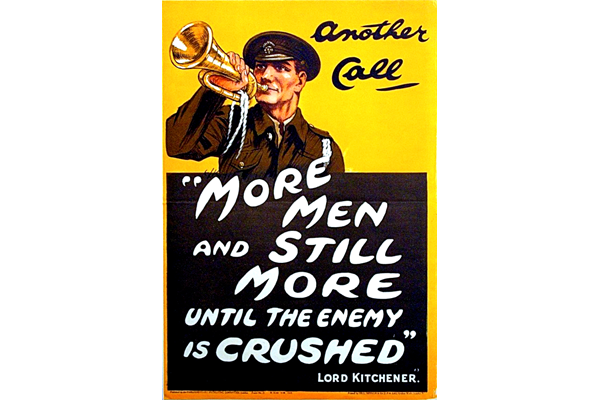
More Men and Still More
First World War recruitment poster 'More Men and Still More', published by the Parliamentary Recruiting Committee in 1914. - 1996.100.188 ©McLean Museum and Art Gallery, Greenock.
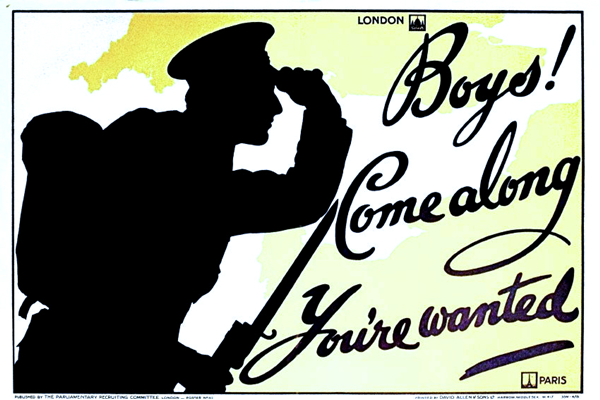
Boys! Come Along - You're Wanted
First World War recruitment poster 'Boy's Come Along - You're Wanted', published in 1915. - 1996.100.189 ©McLean Museum and Art Gallery, Greenock.
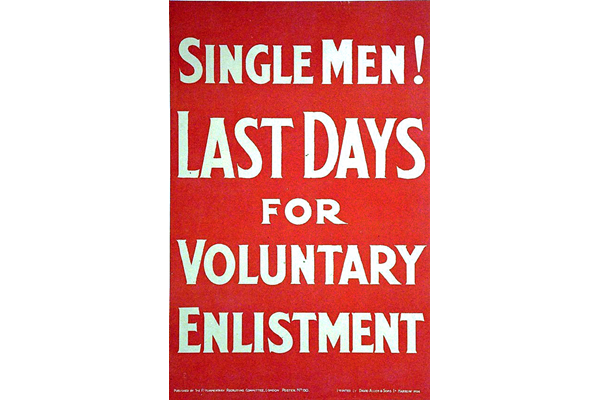
Single Men - Last Days
First World War recruitment poster 'Single Men - Last Days', published by the Parliamentary Recruiting Committee in 1916. - 1996.100.132 ©McLean Museum and Art Gallery, Greenock.
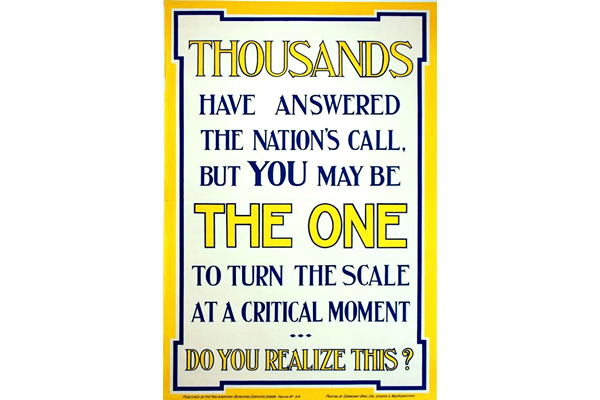
Thousands have answered the Nation's Call
First World War recruitment poster 'Thousands have answered the Nation's Call', published by the Parliamentary Recruiting Committee in 1915. - 1996.100.213 ©McLean Museum and Art Gallery, Greenock.

He's Happy & Satisfied - Are You?
First World War recruitment poster 'He's Happy & Satisfied - Are You?' published by the Parliamentary Recruiting Committee in 1915. - 1996.100.228 ©McLean Museum and Art Gallery, Greenock.
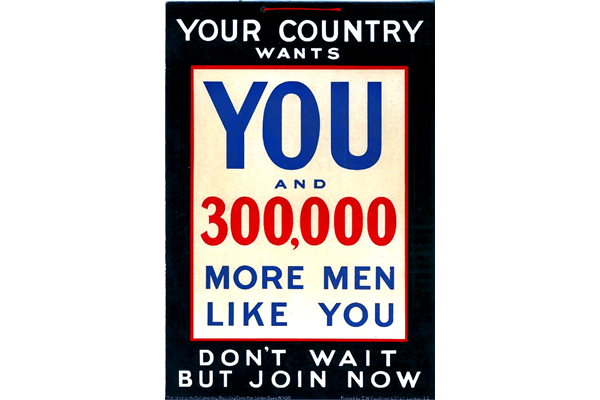
Your Country Wants You
First World War recruitment poster 'Your Country Wants You', published by the Parliamentary Recruiting Committee, London in 1915. - 2012.102.20
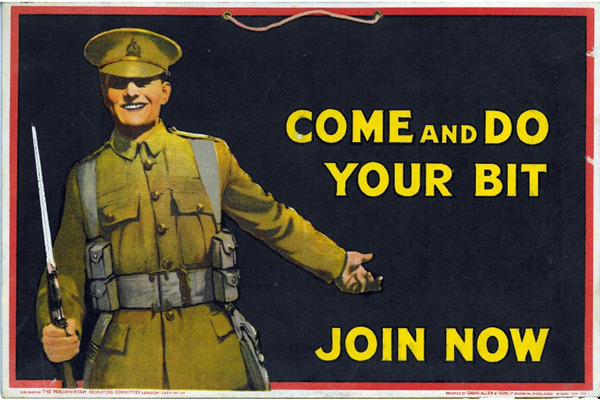
Come and Do Your Bit
First World War recruitment poster 'Come and Do Your Bit', published by the Parliamentary Recruiting Committee, London in 1915. - 2012.102.23 ©McLean Museum and Art Gallery, Greenock.

Line Up Boys! Enlist Today
First World War recruitment poster 'Line Up Boys - Enlist Today', published by the Parliamentary Recruiting Committee, London in 1915. - 2012.102.19 ©McLean Museum and Art Gallery, Greenock.

Britain Needs You at Once
Britain Needs You At Once - Lithograph poster published by the Parliamentary Recruiting Committee in 1915 - 1996.100.15 - Copyright McLean Museum and Art Gallery, Greenock.



























